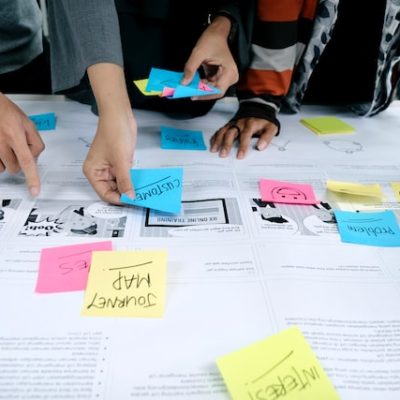

I struck out.
It was 2008. The biggest recession to hit Chicago in decades. Everyone in sales struck out. I had only been an industrial broker for a few years, this business takes time to build, and my wife and I were expecting our 2nd daughter. My salary was full commission and the market tanked; I mean everything went to zero. Nada.
Growing up a Cubs fan, I got used to losing, but nothing prepared me for this.
I called in Uncle Lou. I’ve been calling in Uncle Lou for business advice since I was 16. After our conversation, I made two of the most humbling decisions of my life. First, I accepted Uncle Wally’s generous loan. Yes, I paid him back. Then I returned to Lou Malnati’s delivering pizzas. The same job I had in high school, the one my neighbor and her friend (who later became my beautiful wife) secured for me.
These were lean, tough years.
Which is why when I got hired again as an industrial broker at Cushman and Wakefield, over 14 years ago, I was determined to employ a long-term strategy for success. It’s similar to how I approach baseball, a game my grandpa and dad taught me as a child, and I continued to play well into my thirties. I keep the focus on building quality relationships and delivering value regardless of if a sale is on the line. Then when sales do come in – the singles, doubles, triples, and homeruns – they are all treated with same vigor because I know this game is won over many innings, over many years.
Or even generations which is often the case for many family run manufacturing businesses.
I especially like these clients because hard work and loyalty are at the core of their ethics. Plus, I was born with the gift of gab, inherited from my dad a retired postmaster, so I enjoy building rapport within various family dynamics. My own Italian family is like how comedian Sebastian Maniscalco describes his in that company skit, pre-wireless days, where folks are on the ready with Entenmann cakes and Sanka to welcome in visitors. Imagine that – no phone call, no notice, just a knock on the door – and my grandparents loved it. In fact, we all did. Our Sunday family dinners often had random company at the table. Food was the way my grandmother showed love, she even once dropped off a lasagna to help ensure I got a college internship at 670AM The Score. It kills me I’m such a poor excuse for an Italian. I developed too many allergies as an adult to enjoy these meals. I am even allergic to pizza, c’mon, now that’s ironic.
I take extreme pride in being an honest resource to my clients, one they can rely on to mitigate multi-million-dollar risk.
Moving a manufacturing plant is strenuous with so many considerations to factor in, it gets overwhelming fast. It’s a pleasure navigating clients through this process, step-by-step like a partner customizing a real estate plan they can trust. Frequently, this means I play the ultimate connector, making service provider recommendations and calling on team members when their expertise is needed. What I love about baseball, unlike other fast paced, individually high-scoring games, is you need all nine players to show up and work together to win. Our sales strategy at Cushman and Wakefield works the same, and we prioritize fun and family.
As a dad of three girls, it’s my absolute privilege to be at their events and active in their lives. My motto to them is to be true to yourself at work and at home. Which is why at the end of every baseball season, I chuckle thinking about my grandfather who lived 96 years as an avid Cubs fan, but not long enough to celebrate their 2016 World Series championship. Sometimes being true to yourself also means striking out. That is when quality relationships matter the most. Strive to make it count.


